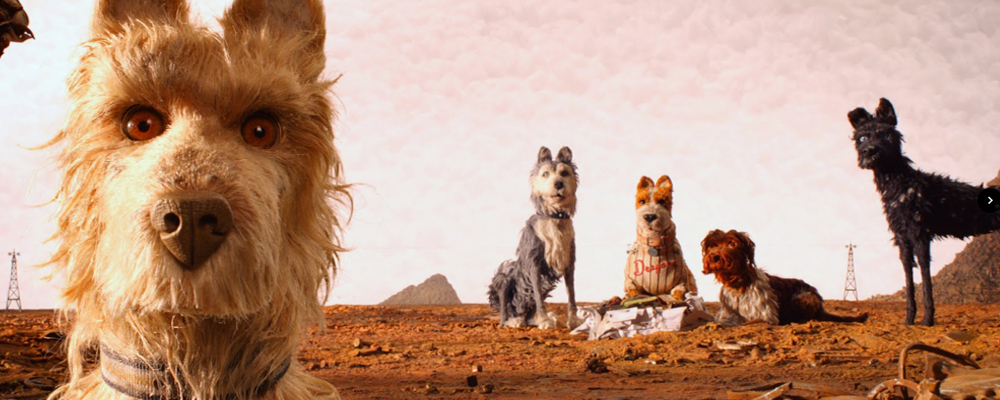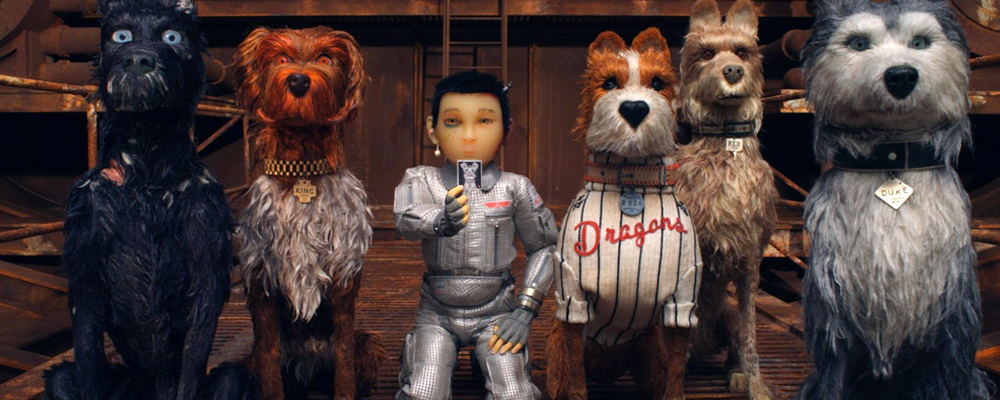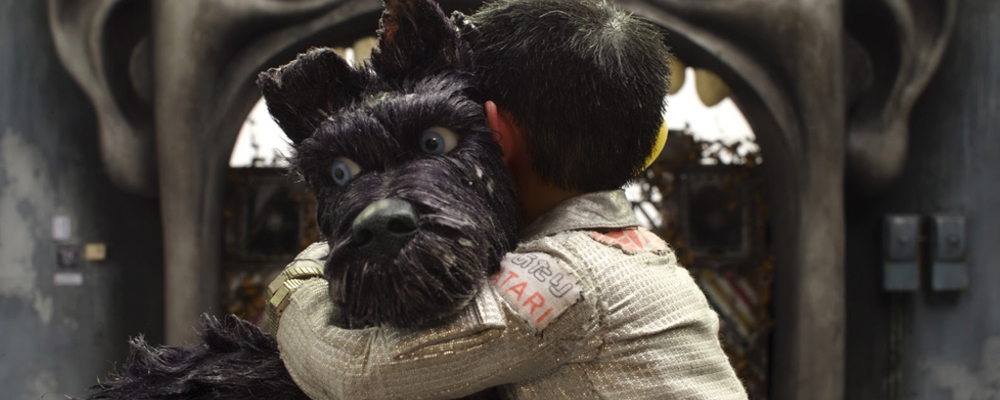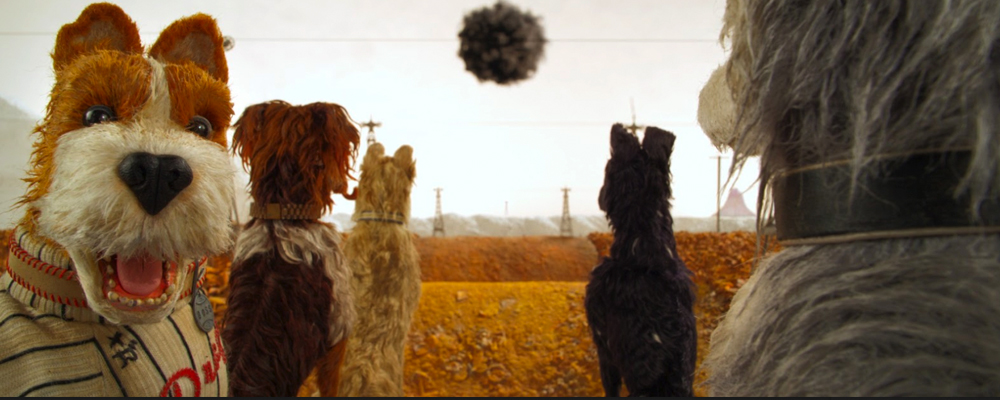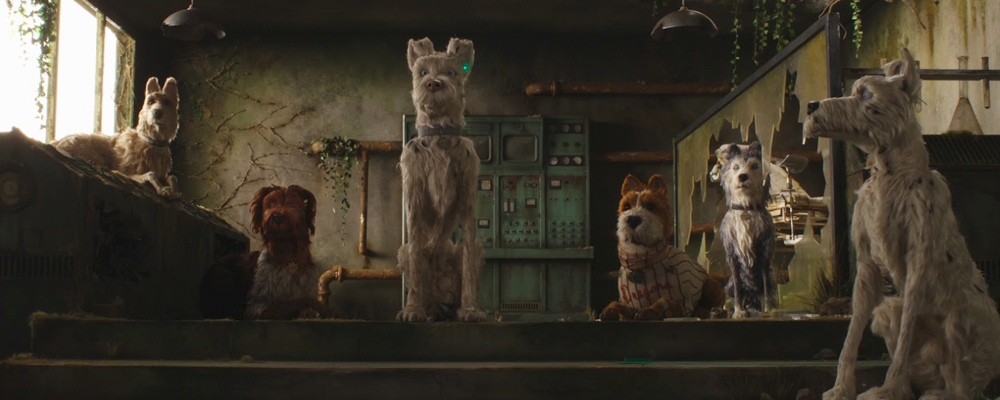Wes Anderson Balances Light and Dark in Canine Dramedy ‘Isle of Dogs’
Sandra Miska
Wes Anderson, the visionary filmmaker behind modern classics such as “The Royal Tenenbaums” and “The Grand Budapest,” once again marries the whimsical with the darker side of humanity with “Isle of Dogs,” his second-stop motion animation film after “The Fantastic Mr. Fox.” This time, he trades foxes for dogs to tell the story of a band of canines banished to their own island. Far from the usual Pixar fare, or even Roald Dahl, Anderson puts the pups here through the ringer as they and the humans who love them fight for their acceptance in society after the rise of a dog-hating regime in this imaginative and thought-provoking dystopian dramedy.
Set in Japan in the near future, the film opens with a visually stunning prologue in which Anderson outdoes himself with a folklore that explains the the complex history of the Japanese people and the canine population in the centuries leading up to the events of story. Co-writer Kunichi Nomura voices the film’s chief villain, Kobayashi, the mayor of Megaskai City who has uses an outbreak of dog flu as an excuse to issue a decree banishing all dogs from his municipality, exiling them to Trash Island, which is just as hospitable as it sounds. The first furry pet to go is Spots (Liev Schreiber), the beloved canine bodyguard of Atari (Koyu Rankin), Kobayashi’s own nephew, an orphan affectionately referred to by the media as the mayoral ward. It’s not long before Kobayashi finds himself up for reelection, and the city becomes divided into pro-dog and anti-dog camps.
But the real story is on Trash Island. Desperate to be reunited with his best friend, 12-year-old Atari takes it upon himself to fly a vintage plane to the isle. Following his crash landing, he meets a motley crew of mutts led by the aptly named Chief (Bryan Cranston). Along with former baseball mascot Boss (Bill Murray), Rex (Edward Norton), Duke (Jeff Goldblum) and King (Bob Balaban), he works to help out the kid now known as “the little pilot.” In both Spots and Chief, Atari finds the love and affection denied to him by his wicked uncle, and these relationships truly celebrate the sacred bonds between man and his best friend that has endured for centuries.
It goes without saying that the dogs here are adorable. Even the most beaten down and scruffy pulls at the viewer’s heartstrings, and Anderson and his team obviously went to great lengths in making each pup unique and personable, with their expressive eyes and distinct personalities. Again, these aren’t your stereotypical Disney doggies, as Anderson endears them to the viewer by not making them the happy-go-lucky tail-wagging variety of mutts, but by humanizing them. Chief, in a homage to “Lady and the Tramp,” romances Nutmeg (Scarlett Johansson), a dog trained for shows who dismisses her frivolous former life and says things like “I can’t imagine bringing puppies into a world like this.” The two go back and forth, and there’s some great banter here reminiscent of old Hollywood romances and film noirs. An introspective canine, Chief evokes all the feels as he offers explanation for some past aggressive behavior: “I was scared.”
While much of the world of “Isle of Dogs” is surprisingly enchanting, Anderson doesn’t shy away from the morbid. It is revealed that Trash Island once housed a facility in which animals were tested on, and numerous survivors of these tortures remain, with the scars to prove it. Other scenes of dogs being mistreated and exploited remind the viewer that we humans still have ways to go in improving our relationships with our four-legged pals. We’re not much gentler to our fishy friends either, as an unsettling scene in sushi restaurant detailing what goes into preparing sashimi reveals, a scene that may cause one to think twice before indulging in this delicacy anytime soon.
Anderson certainly honors Japanese culture here, not only with the striking images, but also with his dialogue choices. All the of Japanese characters speak their native language sans subtitles, which essentially puts the English-speaking viewer in the place of the dogs – We get a sense of what’s going on through their tones and body language, but we don’t understand their words. However, with the exception of Atari and an assistant scientist called Yoko Ono (voiced by none other than Yoko Ono), all of the key Japanese players are more villainous than not. Greta Gerwig, meanwhile, voices Tracy Walker, a plucky and precocious foreign exchange student from Ohio who shares Atari’s idealism and leads a pro-dog student group. A guide of sorts for the Western viewer in this world that often seems bizarre, Tracy has a pivotal role in the movement to bring home the dogs, and Anderson will no doubt receive a certain degree of criticism for veering into white savior territory.
“Isle of Dogs” opens March 23 in New York, Los Angeles, San Francisco, Washington, D.C. and Austin with a national expansion to follow.

